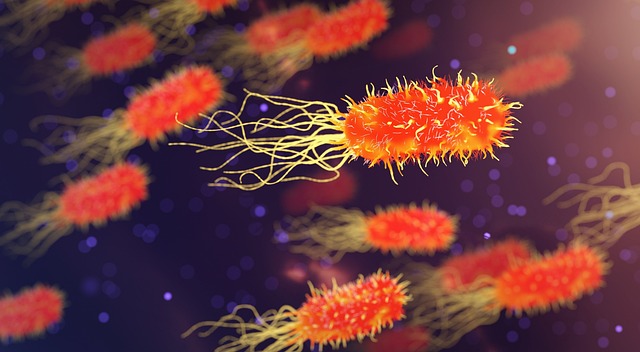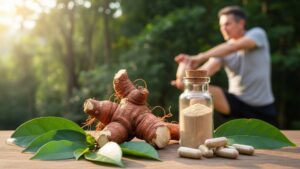The Role of Microbial Testing in Natural Products
The term “natural products” often evokes the image of wholesome, chemical-free, and safe consumer goods. But the reality is more complex. Derived from plants, fungi, algae, and other biological sources, natural products are uniquely vulnerable to microbial contamination throughout their lifecycle—from cultivation and harvest to packaging and distribution.
Microbial testing is essential to ensure the safety, efficacy, and regulatory compliance of these products. Whether it’s a botanical supplement, functional food, or herbal extract, testing for microbial contamination helps avoid product recalls, health risks, and regulatory penalties.
What Is Microbial Testing?
Microbial testing refers to laboratory analysis that identifies and quantifies microorganisms present in a given material. These organisms may include:
- Pathogenic bacteria (e.g., Salmonella, E. coli, Listeria monocytogenes)
- Spoilage organisms (e.g., yeast and mold)
- Indicator bacteria (e.g., coliforms, Enterobacteriaceae)
- Anaerobic bacteria (e.g., Clostridium botulinum)
The goal of microbial testing is to confirm that these organisms are within safe limits established by industry and governmental standards, or ideally, not present at all.
Why Natural Products Are Prone to Microbial Contamination
Natural products—especially those derived from botanicals and raw agricultural materials—carry a higher risk of microbial exposure. Reasons include:
- Environmental exposure during growth and harvest (soil, water, animal contact)
- Organic fertilizers that may introduce bacteria
- Moisture-rich environments that foster microbial growth
- Minimal processing methods, which may not involve microbial kill steps
- Complex supply chains, increasing the chance of contamination or cross-contact
Additionally, many natural products are used in powdered or dried form, which can mask microbial activity until rehydrated or consumed.
Types of Microbial Testing Performed on Natural Products
1. Total Aerobic Microbial Count (TAMC)
This test estimates the total number of aerobic bacteria present in a sample. High counts may indicate poor hygiene during manufacturing or storage.
2. Total Yeast and Mold Count (TYMC)
Yeasts and molds are common in plant-based materials. Some molds can produce mycotoxins, which are harmful to human health.
3. Pathogen-Specific Testing
Critical for public safety and regulatory compliance. Common targets include:
- Salmonella spp.
- Escherichia coli (especially E. coli O157:H7)
- Listeria monocytogenes
- Staphylococcus aureus
- Clostridium botulinum
These tests often involve enrichment, culture-based, and molecular techniques such as PCR.
4. Indicator Organism Testing
Used to assess sanitation effectiveness. Typical indicators include:
- Coliforms
- Fecal coliforms
- Enterobacteriaceae
Presence of these organisms suggests possible contamination from human or animal waste.
5. Rapid Microbial Methods (RMMs)
Advanced techniques such as:
- qPCR (quantitative Polymerase Chain Reaction)
- Bioluminescence assays (e.g., ATP testing)
- Flow cytometry
These methods offer faster turnaround and higher sensitivity than traditional culture-based techniques.
Regulatory and Industry Standards for Microbial Limits
Compliance with microbial limits is required by multiple global authorities. Key standards include:
FDA (U.S. Food and Drug Administration)
Under 21 CFR Part 111, manufacturers must ensure dietary supplements are not adulterated with harmful microorganisms.
USP (United States Pharmacopeia)
- <2021> and <2022>: Microbiological examination of non-sterile products
- Sets microbial limits for dietary supplements and herbal drugs.
WHO (World Health Organization)
Provides microbiological guidelines for herbal medicines, focusing on contamination prevention and testing.
EFSA (European Food Safety Authority)
Sets limits for microbial contamination in food supplements and natural food products entering the EU market.
When and Where Microbial Testing Is Performed
| Testing Stage | Purpose |
|---|---|
| Raw Materials | Prevent contamination from entering the production process |
| In-Process | Monitor conditions during extraction, drying, blending |
| Finished Product | Confirm safety, label compliance, and shelf stability |
| Stability Testing | Assess microbial growth over time under various conditions |
Common Natural Product Categories That Require Microbial Testing
| Product Type | Microbial Risk Factors |
|---|---|
| Herbal Supplements | Soil-derived bacteria, fungal spores, high moisture |
| Botanical Extracts | Solvent-based processes that may not kill microbes |
| Functional Foods & Beverages | Fermentable sugars, unpasteurized ingredients |
| CBD & Hemp Products | Moisture, post-extraction contamination |
| Fermented Natural Products | Overgrowth of non-pathogenic but excessive microbes |
| Superfood Powders | Long shelf life, hygroscopic nature increases risk |
Analytical Methods Used in Microbial Testing
🧫 Culture Methods
Traditional and still widely accepted for regulatory compliance. Includes plating on agar and incubation to identify colonies.
Molecular Techniques
Used to detect specific DNA sequences of pathogens.
- qPCR: High sensitivity and specificity
- LAMP (Loop-mediated Isothermal Amplification)
- DNA barcoding for complex botanical materials
- Biochemical Assays
- Enzyme-based tests for specific microbial enzymes
- Colorimetric and fluorometric reactions
Implications of Microbial Testing for Shelf Life and Stability
High microbial loads can:
- Shorten product shelf life
- Alter flavor, color, or texture
- Introduce toxins (e.g., aflatoxins from mold)
- Undermine probiotic content in fermented goods
In shelf-life studies, microbial testing is paired with:
- Water activity (Aw)
- Preservative efficacy testing
- Packaging compatibility analysis
Reporting and Interpretation of Microbial Test Results
Results are typically reported in:
- CFU/g (Colony Forming Units per gram) or CFU/mL
- Qualitative (e.g., “Not Detected”) for pathogens
- Compared against established limits (USP, FDA, EFSA)
Failing a microbial test often requires:
- Product quarantine
- Root cause analysis
- Process validation and retesting
Authoritative Resources
- FDA 21 CFR Part 111
- USP Microbiological Standards
- WHO Guidelines on Herbal Medicines
- EFSA Food Safety Standards
FAQ: Microbial Testing Natural Products
What’s the difference between total count and pathogen testing?
Total count (like TAMC or TYMC) shows general microbial load, while pathogen testing specifically targets harmful organisms that pose health risks.
Are microbial tests required for natural supplements?
Yes. Most regulatory frameworks—including FDA and USP—require microbial testing for dietary supplements and herbal products.
How often should microbial testing be done?
At minimum, test every product batch. Additional testing may be required at the raw material, in-process, and stability stages.
Can natural preservatives replace microbial testing?
No. While preservatives can inhibit microbial growth, testing is still necessary to verify product safety and efficacy.
What happens if a product fails microbial testing?
Corrective actions may include product disposal, reformulation, reprocessing, or updating sanitation protocols. Retesting is usually required.
✅ Conclusion: Microbial Testing is Non-Negotiable for Natural Products
Whether you’re producing botanical supplements, adaptogenic drinks, or fermented foods, microbial testing is a non-negotiable part of product safety and quality control. It ensures regulatory compliance, extends shelf life, and—most importantly—protects consumer health.
A comprehensive microbial testing program should be integrated at every stage of production to reduce risk and uphold the highest standards of purity, safety, and transparency.





